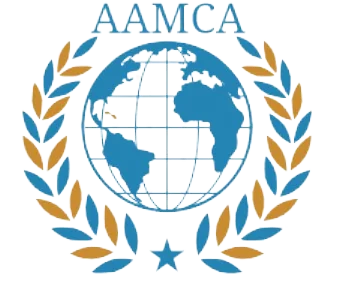Introduction to the 20-Point Peace Plan
The 20-Point Peace Plan emerged as a crucial framework aimed at addressing the multifaceted challenges inherent in the Gaza conflict. Formulated in response to a protracted cycle of violence and instability in the region, this comprehensive strategy seeks to delineate actionable steps toward fostering lasting peace. The plan encompasses various dimensions, including diplomatic, humanitarian, and security aspects, reflecting the complexities involved in reaching a sustainable resolution.
Originating from a collaborative effort among influential stakeholders, the plan draws its foundation from previous peace initiatives while integrating lessons learned from past failures. Its objectives are centered on promoting reconciliation among conflicting parties, facilitating dialogue, and ultimately enhancing the living conditions for the affected civilian population. By outlining specific measures, the 20-Point Peace Plan aspires to build the necessary trust and confidence essential for any peace process.
A pivotal moment in the advancement of this initiative occurred with the endorsement of UN Security Council Resolution 2803 (2025). This resolution highlights the international community’s commitment to the objectives laid out in the plan and emphasizes the imperative for a united effort toward restoring peace and stability. Furthermore, the establishment of a temporary international stabilization force arises from this plan, aimed at creating a secure environment conducive to the peacebuilding process. This force is designed to support local authorities, protect civilians, and facilitate humanitarian assistance, thereby addressing immediate security concerns while laying the groundwork for longer-term conflict resolution strategies.
Through the collective implementation of the 20-Point Peace Plan, stakeholders aim to navigate the arduous path to peace in Gaza, recognizing the essential role of cooperation and sustained engagement among international and local actors alike.
Phase 1 Achievements and Challenges
The first phase of the 20-Point Peace Plan has been marked by notable achievements alongside significant challenges. One of the primary accomplishments is the successful implementation of a ceasefire, a crucial step that has contributed to a reduction in hostilities between the involved parties. This halt in violence has allowed for the possibility of further negotiations and a more structured dialogue aimed at long-term peace. The ceasefire’s establishment is a vital foundation upon which future phases of the plan can build, as it provides both sides with a respite from immediate conflict and an opportunity to address underlying issues.
Additionally, the structured exchange of hostages and detainees has emerged as a significant diplomatic success. By facilitating this process, both parties have demonstrated a willingness to restore trust and acknowledge the humanitarian plight of individuals affected by the conflict. This exchange not only serves to reunite families but also symbolizes a commitment to progressing further in the peace process, thus laying the groundwork for cooperative efforts in subsequent phases.
However, this initial phase has not been without its challenges. One pressing issue is the scale of humanitarian aid required to support affected populations. Many regions continue to experience severe shortages of essential supplies, which complicates the stabilization efforts initiated by the ceasefire. The distribution of humanitarian aid remains hindered by logistical obstacles and ongoing tensions, raising concerns about the sustainability of peace in the region. Furthermore, despite the ceasefire agreement, outbreaks of violence and skirmishes persist, which jeopardizes the fragile stability achieved thus far. It is imperative for all stakeholders to address these challenges promptly to ensure the long-term success of the 20-Point Peace Plan and to maintain momentum toward lasting peace.
Phase 2: Goals and Implementation Strategies
The second phase of the 20-Point Peace Plan focuses on several critical objectives aimed at fostering long-term stability in the region. One of the primary goals is the disarmament of Hamas. This step is essential not only for ensuring the security of Israel but also for creating an environment conducive to peace negotiations. Disarming militant factions is crucial to reduce the cycle of violence and to pave the way for a more diplomatic approach to the ongoing conflicts.
Another significant aspect of this phase includes further Israeli withdrawals from strategic territories. These withdrawals are intended to demonstrate a commitment to peace and to signify a willingness to engage in meaningful negotiations. The phased nature of these withdrawals aims to bolster confidence among Palestinian communities and facilitate their independence and sovereignty.
To ensure security during this transitional period, the plan proposes the transition of security responsibilities to an international stabilization force. This force is envisioned as a neutral entity that can maintain order while providing reassurance to both parties involved. The presence of such a force will ideally help to mitigate tensions and prevent escalations that could derail the peace process.
Additionally, the proposal includes the establishment of an interim technocratic government, overseen by a ‘Board of Peace’. This governing body will be responsible for the transition of power and ensuring that governance meets the needs of the Palestinian people. The involvement of a technocratic approach emphasizes the importance of professionalism and expertise in managing public affairs, aimed at promoting Palestinian self-determination effectively.
Enhancing governance structures and promoting stability are critical elements of this phase. The success of these strategies will ultimately depend on the cooperation of both Israeli and Palestinian leadership, as well as the international community’s support in realizing a peaceful coexistence.
Global Reactions and Statements from the Meeting
The recent UN Security Council meeting surrounding the 20-Point Peace Plan evoked a range of responses from key global stakeholders. The United States, a significant player in international diplomacy, emphasized the critical need for enhanced humanitarian aid to the affected regions, particularly Gaza. The U.S. administration reiterated its commitment to ensuring that humanitarian assistance reaches those in dire need, underscoring the importance of international collaboration in addressing the growing crisis. The call for an immediate and coordinated global response to the humanitarian situation was a central theme in the U.S. remarks, reflecting a wider concern about the escalating violence and its implications for regional stability.
UN officials also weighed in on the proceedings, highlighting the tenuous nature of the situation in Gaza. Their comments focused on the urgent need for restraint from both conflicting parties, signaling that further escalation could undermine the fragile prospects for peace. The dignitaries expressed concern about the potential humanitarian fallout that could arise from any continued hostilities, stressing the necessity for dialogue and diplomatic engagement to pave the way for sustainable solutions.
In addition, perspectives from other member states, notably the United Kingdom, contributed to the discourse. The UK representatives acknowledged the complexity of the situation, advocating for a multilateral approach to advance the peace plan. British officials articulated support for the UN initiatives aimed at de-escalating tensions, emphasizing that cooperation and understanding among nations are essential to foster conditions ripe for peace. This concerted call to action reflects a collective recognition of the challenges presented by the current state of affairs and the urgency needed to fulfill the objectives of the 20-Point Peace Plan. Through these diverse reactions, the meeting underscored the necessity of a unified stance in addressing the multifaceted issues at hand.




